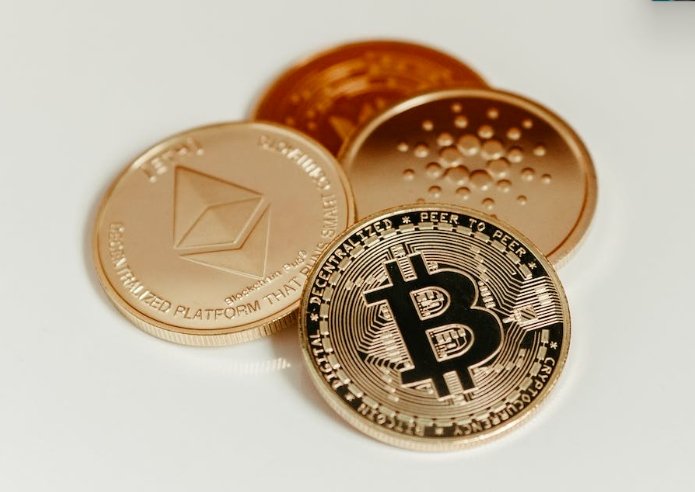Decentralized finance (DeFi) is a rapidly growing sector of the cryptocurrency space that has the potential to revolutionize financial services. DeFi is a term used to describe an array of digital financial services, such as lending, borrowing, and trading, that are built around blockchain-based protocols. These protocols are open-source and permissionless, meaning anyone with an internet connection can access them. This has enabled a new wave of financial services that have the potential to disrupt traditional banking and financial services.
This article will provide an insider’s guide to unlocking the power of decentralized finance. It will cover the basics of DeFi, the different types of DeFi protocols, and the advantages of using DeFi. We will also discuss the potential risks and challenges associated with DeFi, as well as explore ways to maximize the benefits of DeFi. Finally, we will discuss the future of DeFi and its potential to revolutionize the way we use and manage our finances. By the end of this article, you will have a comprehensive understanding of DeFi and how to leverage it to your advantage.

The Basics of DeFi
DeFi, short for Decentralized Finance, is a new financial system built on blockchain technology. It is a way to provide financial services, such as lending, borrowing, and trading, without a centralized intermediary. It is a peer-to-peer (P2P) system that is open to everyone with no need for a bank or other financial institution.
DeFi works by leveraging the power of smart contracts and decentralized exchanges. Smart contracts are computer protocols that are designed to facilitate, verify, or enforce the negotiation or performance of a contract. They are self-executing, meaning that no third-party is required to enforce the terms of the contract. Decentralized exchanges are digital marketplaces that use the blockchain to facilitate trading without the need for a central authority.
Key components of DeFi include:
• Smart Contracts: Self-executing digital contracts that are used to automate financial transactions.
• Decentralized Exchanges (DEXs): Digital marketplaces that facilitate trading without the need for a central authority.
• Liquidity Pools: Decentralized pools of funds that are used to facilitate the trading of digital assets.
• Governance Tokens: Digital tokens that are used to incentivize and reward users who participate in the DeFi ecosystem.
Examples of DeFi applications include MakerDAO, Compound, Uniswap, and many others. MakerDAO is a decentralized lending platform that allows users to borrow funds against their cryptocurrency collateral. Compound is a money market platform that allows users to lend and borrow tokens and earn interest. Uniswap is a decentralized exchange that allows users to trade cryptocurrencies without the need for a third-party intermediary.
DeFi is still in its early stages and has the potential to revolutionize the financial system. By cutting out the middleman, DeFi is able to provide services that are more efficient, secure, and cost-effective than traditional finance. As the DeFi ecosystem continues to evolve, it is expected to bring about a new wave of innovation in the financial sector.
The Benefits of DeFi
DeFi (Decentralized Finance) is a new financial system that is built on the blockchain and provides users with a range of benefits. DeFi is a new technology that has the potential to revolutionize the financial industry.
Greater Financial Freedom and Control:
DeFi provides users with greater financial freedom and control. With DeFi, users can access a variety of financial services, such as lending, borrowing, trading, and investing. DeFi allows users to take charge of their financial decisions and have greater control over their investments. This means that users can make their own decisions without the need for a third-party intermediary.
Lower Transaction Fees:
DeFi can also help users save money on transaction fees. Because DeFi is built on the blockchain, users can send and receive digital assets without having to pay high transaction fees. This is because DeFi does not require a third-party intermediary, so users can save money on fees.
Greater Transparency and Security:
DeFi also provides users with greater transparency and security. Since DeFi is built on the blockchain, all transactions are visible and immutable. This means that users can be sure that their transactions are secure and that they cannot be tampered with. This provides users with greater peace of mind when it comes to their investments.
Access to a Global Market:
DeFi also provides users with access to a global market. Because DeFi is built on the blockchain, users can access a global market of buyers and sellers. This means that users can access a variety of assets from different countries without having to worry about the traditional barriers to entry. DeFi also provides users with access to a variety of markets, such as the cryptocurrency and traditional markets.
Risks and Challenges of DeFi
Smart Contract Risks: Smart contracts are a key feature of the DeFi ecosystem, providing the ability to automate certain processes and facilitate the transfer of digital assets and various financial services. However, due to the complexity of their code, they can be prone to errors and malicious exploitation. Smart contracts are also susceptible to bugs, which can effectively freeze the funds they manage. This risk is further amplified by the fact that the code is immutable, meaning any bugs or errors will not be able to be fixed. This can be particularly dangerous if the bug leads to the loss of funds.
Liquidity Risks: DeFi protocols are highly reliant on liquidity, which can be a source of risk. If there is not enough liquidity, it can be difficult to execute transactions and engage in certain activities, such as arbitrage trading or taking out loans. This can also lead to higher prices, as there are fewer buyers and sellers in the market. Additionally, liquidity providers can be vulnerable to flash loan attacks, which allow malicious actors to borrow large amounts of assets and then manipulate the market.
Regulatory Challenges: DeFi is a relatively new and emerging technology, and there are still a lot of regulatory questions that need to be answered. This could potentially lead to changes in the law that could have an adverse effect on DeFi projects, such as limiting their ability to operate or even shutting them down. Furthermore, there is also the risk of DeFi being regulated more heavily, which could lead to more restrictions and paperwork.
Potential for Scams and Fraud: Due to the open and decentralized nature of DeFi, there is a potential for malicious actors to take advantage of unsuspecting users. For example, scammers may create fake projects and tokens in order to defraud investors, or they may launch a “rug pull” where they exit a project and leave investors with worthless tokens. Furthermore, the decentralized nature of DeFi means there is no centralized authority to monitor the activities of malicious actors, which can further increase the risk of fraud.
How to Get Started with DeFi
Setting up a Wallet
The first step to getting started with DeFi is to set up a wallet. A wallet is essentially a digital account that stores and transmits cryptocurrencies. There are many different types of wallets, including hardware wallets, software wallets, and multi-signature wallets. Each of these wallets has different advantages and drawbacks, so it is important to choose the right one for your needs. Before setting up a wallet, it is also important to make sure that it is compatible with the DeFi platform you are interested in.
Choosing the Right DeFi Platform
Once you have set up a wallet, the next step is to choose the right DeFi platform. There are several different types of DeFi platforms, including decentralized exchanges, lending platforms, and decentralized applications. Each of these platforms has different features and benefits, so it is important to research and compare them before selecting one. Additionally, it is important to look for a platform that offers features such as low transaction fees, high liquidity, and a secure platform.
Understanding Different DeFi Products and Their Risks
Once you have chosen a DeFi platform, it is important to understand the different DeFi products and their risks. Different DeFi products, including decentralized exchanges, lending platforms, and decentralized applications, have different levels of risk and potential rewards. It is important to research each product thoroughly before investing in it to ensure that it is the right choice for you. Additionally, it is important to understand and manage the risks associated with each product.
Tips for Managing Risk
When investing in DeFi products, it is important to understand and manage the risks associated with them. Some tips for managing risk include diversifying your portfolio, only investing what you can afford to lose, and researching each product thoroughly. Additionally, it is important to understand the different types of risks associated with a product, such as market risk, liquidity risk, and credit risk, and take steps to manage them. Finally, it is important to monitor your investments regularly and make adjustments if necessary.
DeFi Investment Strategies
Yield Farming: Yield farming is a type of investment strategy that utilizes the DeFi protocol and incentivizes the users to provide liquidity to the pool. By providing liquidity, the users can earn rewards in the form of tokens or other digital assets. The rewards are based on the amount of liquidity the user provides, the duration of their investment, and the success of the protocol. Yield farming is a great way to earn passive income without having to put in a lot of work or effort.
Staking: Staking is another type of investment strategy that is used in the DeFi space. Staking involves the user locking up a certain amount of digital assets in a platform in order to earn rewards. The rewards are usually paid out in the form of tokens or other digital assets. Staking is a great way to earn passive income and can be done with minimal effort.
Lending and Borrowing: Lending and borrowing are two of the most popular investment strategies in the DeFi space. These strategies involve the user either lending out digital assets to earn interest or borrowing digital assets to use them as collateral. The interest rate and the collateral requirements vary depending on the platform. Lending and borrowing are great ways to earn passive income and can be done with minimal effort.
Liquidity Provision: Liquidity provision is another type of investment strategy that involves the user providing liquidity to a pool of digital assets. The rewards for providing liquidity are usually paid out in the form of tokens or other digital assets. Liquidity provision is a great way to earn passive income and can be done with minimal effort.
DeFi Trends and Future Developments
Emerging DeFi Protocols and Platforms
The DeFi (Decentralized Finance) space has seen an explosion of growth in recent years, with new protocols and platforms being developed at a rapid pace. Many of these protocols, such as MakerDAO, Compound, and Uniswap, are designed to bring financial services typically reserved for traditional finance to the blockchain. These protocols provide access to decentralized lending and borrowing, stablecoins, and open markets for trading digital assets. Other protocols, such as Synthetix and Aave, are designed to offer derivatives and other more complex financial products. As the DeFi space continues to grow, we can expect to see more innovative protocols and platforms emerging.

Integration with Traditional Finance
As the DeFi space matures, there is potential for it to be integrated with traditional finance. Already there are projects that are exploring ways to bridge the gap between traditional finance and DeFi, such as Dharma and MakerDAO. These projects are looking at ways to use DeFi protocols to provide access to traditional financial services, such as loans, savings accounts, and credit lines. If successful, this could open up new opportunities for individuals and businesses to access financial services that have previously been out of reach.
The Role of Decentralized Governance
One of the key features of DeFi protocols is the use of decentralized governance. This means that users of the protocols can have direct input into how the protocol functions and evolves. This can be done through voting on proposals or participating in staking and other forms of governance. This enables users to have a direct say in the direction of the protocol, and to have an influence on its future development.
Potential for DeFi to Transform Global Finance
The potential for DeFi protocols to transform global finance is vast. Already, DeFi protocols are providing access to financial services that were previously not available to many individuals and businesses. By providing access to these services, DeFi can help to reduce inequality in the global financial system. Additionally, the use of decentralized governance and open protocols can help to reduce the risk of fraud and financial manipulation. The DeFi space is still in its early stages, but there is potential for it to have a huge impact on how finance is done in the future.
Conclusion
In conclusion, Decentralized Finance (DeFi) is the future of financial services. It has the potential to revolutionize the way we think about and use financial services. It can be used to democratize access to financial services, unlock new opportunities for financial inclusion, increase transparency and reduce costs. DeFi projects and tools can also help to create new opportunities for investments, lending, and insurance. With the help of the blockchain, DeFi has the potential to revolutionize the financial industry and open it up to a whole new generation of users.
DeFi is an exciting and complex space, and it can be difficult to get started. But, with the help of an insider’s guide, anyone can start to explore and understand the possibilities of DeFi. With a better understanding of the different tools, protocols, and projects that are available, users can start to unlock the power of decentralized finance and take advantage of the numerous opportunities it promises.
FAQs
1. What is Decentralized Finance (DeFi)?
Decentralized Finance (DeFi) is a financial system built on top of blockchain technology which enables users to access a wide range of financial services without the need for a centralized intermediary. DeFi enables users to borrow, lend, trade and manage their finances in a completely decentralized and trustless manner.
2. What are the benefits of DeFi?
DeFi provides numerous benefits to users, including but not limited to, increased transparency, enhanced security, reduced counterparty risk, and greater access to financial services for users around the world. DeFi also enables users to have more control over their finances, with no need to rely on a third party.
3. How does DeFi work?
DeFi works by using blockchain technology to create a decentralized network of users who can access financial services without the need for a centralized intermediary. Smart contracts are used to automate the process of lending and borrowing, as well as other financial services.
4. What are the risks associated with DeFi?
As with any investment, there are risks associated with DeFi. These include price volatility, liquidity risks, and the potential for vulnerable smart contracts to be exploited. It is important to be aware of these risks before investing in DeFi and to understand the risks associated with any particular project.
5. What is a smart contract?
A smart contract is a self-executing contract that is written into code, typically on a blockchain platform. Smart contracts are used to automate the execution of financial services, such as lending and borrowing, and can be used to create decentralized applications.
6. What is a decentralized application (dApp)?
A decentralized application (dApp) is an application that is built on top of a blockchain platform. dApps are typically open source and are designed to be trustless and secure.
7. What is a decentralized exchange (DEX)?
A decentralized exchange (DEX) is a trading platform that is built on top of a blockchain platform. DEXs are designed to be trustless and secure, and allow users to trade cryptocurrencies without the need for a centralized intermediary.
8. What is yield farming?
Yield farming is a process by which users can earn rewards for providing liquidity to a DeFi protocol. Yield farming involves staking a certain amount of a cryptocurrency into a DeFi protocol in exchange for rewards in the form of another cryptocurrency.
9. What is a liquidity pool?
A liquidity pool is a collection of tokens that are held by a DeFi protocol. Users can provide liquidity to a liquidity pool in exchange for rewards. The tokens in a liquidity pool are used to facilitate transactions on the DeFi protocol.
10. What is a trustless system?
A trustless system is a system that does not require users to trust in a third party in order to use the system. In a trustless system, users can be sure that their funds and data are secure, as all transactions are executed on the blockchain.


















